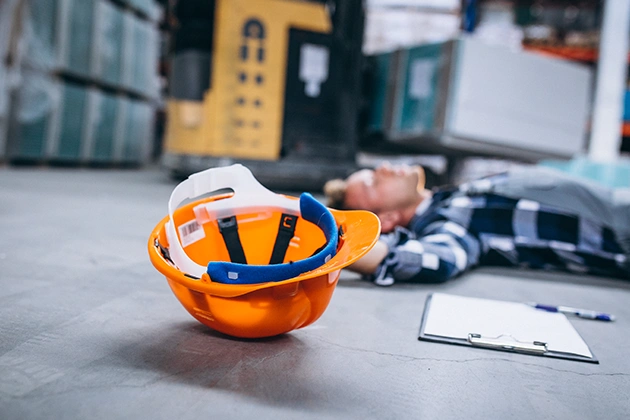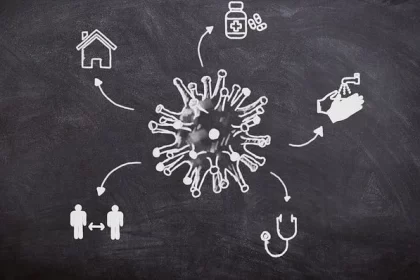Workplace accidents can happen in any industry, from construction sites to corporate offices. While safety protocols and employee training reduce risks, they can’t eliminate them entirely. When an accident occurs, determining who is legally responsible can be a complex process involving employers, employees, third parties, and insurance providers.
For CEOs and executives, understanding liability in workplace accidents is essential, not only to protect the company from legal and financial consequences but also to foster a culture of safety that reduces the likelihood of future incidents.
Understanding the Basics of Workplace Liability
Liability in workplace accidents depends on the nature of the incident, the work environment, and the relationship between the employer and the injured party. In many cases, employers are legally obligated to ensure that their workplaces are safe, free from hazards, and compliant with relevant safety regulations. Failure to meet these obligations can expose the company to legal claims and regulatory penalties.
However, liability isn’t always straightforward. Multiple parties can share responsibility for an accident. For example, a piece of defective equipment might implicate the manufacturer, while unsafe work practices could place fault on the employer or even the employee.
Employer Responsibility and the Duty of Care
Employers have a “duty of care” to provide employees with a safe working environment. This includes:
- Maintaining equipment in good condition
- Implementing safety training programs
- Providing protective gear where necessary
- Monitoring workplace practices for compliance with safety standards
If an employer fails in any of these areas and an accident occurs, the company could be held directly responsible for the resulting injuries. The severity of the legal consequences often depends on whether the failure was due to negligence, recklessness, or a systemic lack of oversight.
Midway through any investigation, legal teams will examine whether the incident qualifies as a work-related injury under applicable laws. This designation matters because it can determine eligibility for workers’ compensation benefits and influence how liability is assigned between employer, employee, and any third parties involved.
Workers’ Compensation and Fault
In most jurisdictions, workers’ compensation is designed to cover employees who are injured on the job, regardless of fault. This system provides a safety net for workers while limiting the employer’s exposure to certain lawsuits. However, exceptions apply, particularly in cases involving gross negligence, intentional harm, or third-party liability.
An employee who files a workers’ compensation claim generally cannot sue the employer directly, but they may pursue legal action against a negligent third party. For example, if a subcontractor’s unsafe practices caused the accident, the injured employee could have grounds for a separate lawsuit.
When Third-Party Liability Comes Into Play
Third-party liability is common in industries that rely on contractors, vendors, or outside service providers. If a delivery driver is injured due to unsafe loading dock conditions created by a separate logistics company, that company could share liability.
Similarly, if defective machinery causes harm, the manufacturer, or distributor might be held responsible. In these cases, the employer may still have to cover initial medical expenses through workers’ compensation, but the business could later seek reimbursement from the third party through a process known as subrogation.
Employee Responsibility and Comparative Fault
While employers bear a significant share of responsibility for workplace safety, employees also have a duty to follow established safety protocols and use provided protective equipment. When employees ignore safety rules or engage in reckless behavior, they may bear partial fault for their injuries.
In jurisdictions that follow comparative fault principles, the degree of an employee’s fault can reduce the amount of compensation they receive. For example, if an employee is found to be 30% at fault for an accident, their compensation could be reduced by that percentage.
The Role of Documentation in Liability Disputes
One of the most effective ways to protect a company in the event of a workplace accident is thorough documentation. This includes:
- Maintaining up-to-date safety training records
- Keeping detailed equipment maintenance logs
- Recording incident reports promptly and accurately
Proper documentation not only helps resolve disputes faster but can also demonstrate that the company took reasonable measures to maintain a safe workplace. This evidence can be critical in defending against claims of negligence.
Regulatory Compliance and Inspections
Government agencies, such as OSHA in the United States, enforce workplace safety regulations. Non-compliance with these regulations can significantly increase liability exposure after an accident. Regular internal audits, combined with periodic third-party safety inspections, can help ensure that operations remain compliant.
In addition to reducing the risk of accidents, proactive compliance efforts can serve as a strong defense in legal proceedings. When a company can show that it consistently met or exceeded safety requirements, it is less likely to be found grossly negligent.
Special Considerations for Remote and Hybrid Work
With the rise of remote and hybrid work models, the definition of a workplace is evolving. Accidents that occur in a home office or during remote work-related activities may still qualify as workplace injuries under certain conditions. For example, if an employee trips over company-issued equipment at home, the employer could still be liable under workers’ compensation rules.
This shift means CEOs must think beyond the physical office. Clear policies and guidelines for remote work safety can help minimize liability in these situations.
Steps for CEOs to Reduce Liability
Invest in Safety Training and Culture
A strong safety culture starts at the top. When CEOs prioritize safety as a core company value, it encourages employees to take it seriously. Ongoing training programs, regular safety meetings, and visible leadership involvement can reinforce this commitment.
Conduct Regular Risk Assessments
Regularly assessing potential hazards in the workplace can help identify risks before they lead to accidents. These assessments should be documented, with action plans developed and implemented to address any identified issues.
Partner with Legal Counsel Early
In the event of a serious accident, involving legal counsel early can help the company navigate complex liability issues, preserve critical evidence, and coordinate communications with insurers and regulators.










